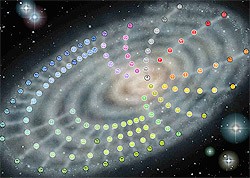Periodic Table of Elements
A question often asked by parents of older elementary students, but more frequently of late by parents of lower elementary, is, “When do we introduce the Periodic Table of Elements? Why is not showing up anywhere in the AMI albums?”
There are a few reasons, and a few ways to approach this topic.
If your child is interested in this topic, by all means, go for it! Interest over-rides any “universal child” observation.
But it’s not there for everyone, because it’s not a key. The periodic table of elements is actually the end-result of a process. A process that the child needs to go through as well in order to fully appreciate it and learn the most from it.
It becomes a key later – in adolescence! After they have experienced it!
How to approach the periodic table of elements – all of these are found in the primary and elementary albums:
- Primary and Lower elementary: sorting objects by observable characteristics (color, shape, size, sinking/floating); explore the states of matter; explore magnetism; describe the characteristics of various objects; measure and compare using a variety of tools; explore substances vs. solutions
- Upper elementary: continue looking at characteristics that are less obvious; consider volumes of solids; magnetic fields; affects on non-magnetic objects; which objects are good/poor conductors of electricity (electricity is not explicit in the elementary albums, but is something to be explored at the time a child expresses interest; and it *should* come up as the child explore each key further); in the final couple of tellings of the Story of God With No Hands, highlight those particles – those basic substances that make up all of creation. You can have resources in the room that share information about the elements; but try to avoid the “official chart” for now if at all possible.
- Adolescence: Now we start to look at chemical properties, if the child hasn’t gone there already; start sorting various substances by their chemical properties; build atoms and molecules; use the term ‘elements’; pull out a set of cards that has information on the elements for sorting purposes. Don’t show the periodic table until the child has created a few different organizations of it himself (based on magnetism; based on atomic weight; based on other characteristics of the child’s choosing) – what are the patterns? What are the similarities and differences? Then pull out the chart itself; but also pull out (or pull up online) samples of other methods of organizing the elements – there are MANY! And they are BEAUTIFUL!
When an elementary child has an interest in this area of study, just pull out those cards and go from there.


